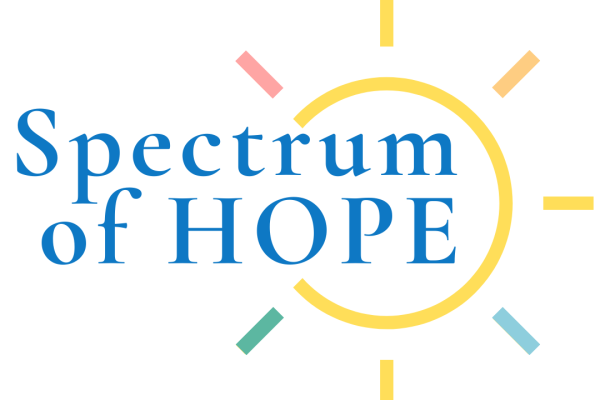Autism has a complicated history. It is an inherently complex condition, and those that live with it have often faced plenty of stigma and misunderstanding. As complex as it is, the autism diagnosis still struggles with generalization and oversimplification.
Much progress has been made in determining how autism should be defined, and what parents with children on the spectrum can come to expect. There are still many misconceptions about what autism is like and what it really means, especially when defining capability and functioning.
The Issue With High-Functioning and Low-Functioning Autism Labels
When people first hear about the spectrum, they are often quick to jump to talking about high-functioning and low-functioning autism. They assume that either end refers to an extreme – one end detailing individuals with ‘low-functioning’ autism, and the other end detailing ‘high-functioning’ autism.
People wonder if there is a difference between low functioning and high function autism. However, the spectrum refers to the breadth of symptoms that compose autism, in order to more properly define it not as an illness with a set number of symptoms, but as an umbrella term for a very long list of potential developmental problems faced by more than 3.5 million Americans living with an autism spectrum disorder. One’s ability to function does not determine where on the spectrum they ‘land’ – instead, the spectrum details the many symptoms that are part of the autism diagnosis.
How Autism Varies by Person
The use of these labels is quite important, as it helps describe an individual’s ability to function or exist without support while on the spectrum, but the labels themselves do little to accurately describe what any given person on the spectrum is going through, nor do they help define the needs of a person diagnosed with autism. This is because, depending on the context, ‘to function’ becomes an entirely different set of criteria.
While someone with autism can function within a given set of rules, they might struggle with other responsibilities or aspects of life. There are many who would traditionally be deemed ‘low-functioning’ who excel at being socially outgoing, particularly adept physically or with one specific form of intelligence, or otherwise capable in a manner that would not be assumed given their label.
Psychologists understand the need for parents and others to figure out ‘where’ on the spectrum their child lies, but also explain that it’s more complicated than simply determining whether a child is ‘high-functioning’ or ‘low-functioning’. Without context to describe the function they’re meant to fulfill, it’s impossible to assign such values, and it’s potentially irresponsible to do so when the individuals in question are still growing and learning to cope with their developmental problems.
In the US, autism severity depends on how much support an individual needs, rather than the abilities they exhibit. While this is a step in the right direction, it doesn’t change the fact that the labels do little to help inform people of how autism might affect an individual, and they do a lot to help individuals feel maligned, less capable, or undeserving of support.
Why High-Functioning and Low-Functioning Autism Labels Are Not Helpful
One study dedicated to better understanding what a positive outcome might look like for a child on the spectrum has discovered that the severity of an individual’s diagnosis does not always inform their ability to perform what we know as daily living tasks – from using the bathroom, to brushing one’s teeth, eating alone, dressing, bathing, and concepts like money and time.
Some children might exhibit stark symptoms but perform well alone. Others require plenty of daily support, without necessarily exhibiting overwhelmingly severe symptoms in other categories. It further goes to show that it is difficult to predict how a child will adapt to the way we live today, depending on early behavior and certain signs.
This all goes to show that autism is very dynamic in nature, that some behavior changes, and that one factor does not always inform another. It is important to distinguish the potential usefulness of generalized labels from the truth that, as a highly individual condition, individuals on the spectrum often struggle with a unique set of problems, and require different accommodations from their peers, not always in keeping with the severity of their overall diagnosis, but on their own unique terms.
The Bottom Line
With this in mind, labeling some people as high-functioning and others as low-functioning does little beyond fundamentally condemning them to either feel unfit and incapable on their own, or making them feel as though they have a responsibility to minimize or even ignore their own struggles, and hide the difficulties they face, rather than openly ask for support that may allow them to better adapt to difficult situations.
It can also lead to problems with discrimination, as some children deemed low-functioning can often still excel in certain activities and fields, even more so than their peers – but the label attaches a certain preconception that they would be less capable, or at the very least in need of more support.
These issues begin in childhood, but the problem with labeling some people as one or the other continues to grow in adulthood, especially as these preconceptions grow in the minds of young adults, who are – as all young adults are – struggling to find themselves and define who they want to be in life. It’s not fair to utilize a narrow and condemning definition to describe individuals who have the potential to shine and be capable, given proper and individual support.
We currently try to measure autism by determining how a person performs on metrics such as IQ, behaviors, symptom severity (which is a complex topic on its own), and skills. With so many factors, it’s impossible to strictly define what it means to be high-functioning or low-functioning, as individuals on the spectrum will excel in some cases and struggle in others.
For parents raising their children on the spectrum, one of the greater worries will be whether they will have the means to fend for themselves out in the real world, engaging with others while taking on the complex responsibilities of adulthood. We need better labels to understand what it means to live on the spectrum, and how external and internal factors influence a person’s development. There are many challenges to face for someone diagnosed with an autism spectrum disorder. Assigning misleading labels does not have to be one of them.


